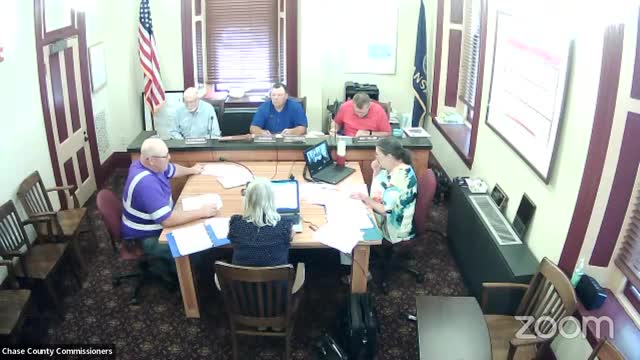Budget Cuts Loom as Disaster Recovery Funds Uncertain
July 15, 2024 | Chase County, Kansas

This article was created by AI summarizing key points discussed. AI makes mistakes, so for full details and context, please refer to the video of the full meeting. Please report any errors so we can fix them. Report an error »

During a recent government meeting, officials discussed the financial implications of a recent disaster response, revealing that approximately $150,000 has been spent so far, with expectations to receive around $125,000 in reimbursements. The reimbursement structure includes 75% from FEMA and an additional 10% from the state, leading to an overall reimbursement rate of 85%.
The conversation highlighted the need for careful tracking of expenses related to the disaster, as any funds received before the end of the fiscal year could necessitate a budget adjustment. Officials noted that if the reimbursement arrives within the same year, it could be credited to the budget without requiring further adjustments.
Further discussions centered on potential budget cuts across various departments. A proposal to reduce expenditures by 5% was considered, which would require identifying approximately $900,000 in cuts. The current total tax levy stands at $4,567,015, reflecting a significant increase from the previous year. Officials debated the implications of raising taxes by 5%, which would generate an additional $183,000 but would also necessitate substantial cuts elsewhere.
The meeting underscored the complexities of managing disaster recovery funds and the ongoing challenges of balancing the budget while addressing community needs. As officials navigate these financial decisions, the impact on local services and infrastructure remains a critical concern.
The conversation highlighted the need for careful tracking of expenses related to the disaster, as any funds received before the end of the fiscal year could necessitate a budget adjustment. Officials noted that if the reimbursement arrives within the same year, it could be credited to the budget without requiring further adjustments.
Further discussions centered on potential budget cuts across various departments. A proposal to reduce expenditures by 5% was considered, which would require identifying approximately $900,000 in cuts. The current total tax levy stands at $4,567,015, reflecting a significant increase from the previous year. Officials debated the implications of raising taxes by 5%, which would generate an additional $183,000 but would also necessitate substantial cuts elsewhere.
The meeting underscored the complexities of managing disaster recovery funds and the ongoing challenges of balancing the budget while addressing community needs. As officials navigate these financial decisions, the impact on local services and infrastructure remains a critical concern.
View full meeting
This article is based on a recent meeting—watch the full video and explore the complete transcript for deeper insights into the discussion.
View full meeting
